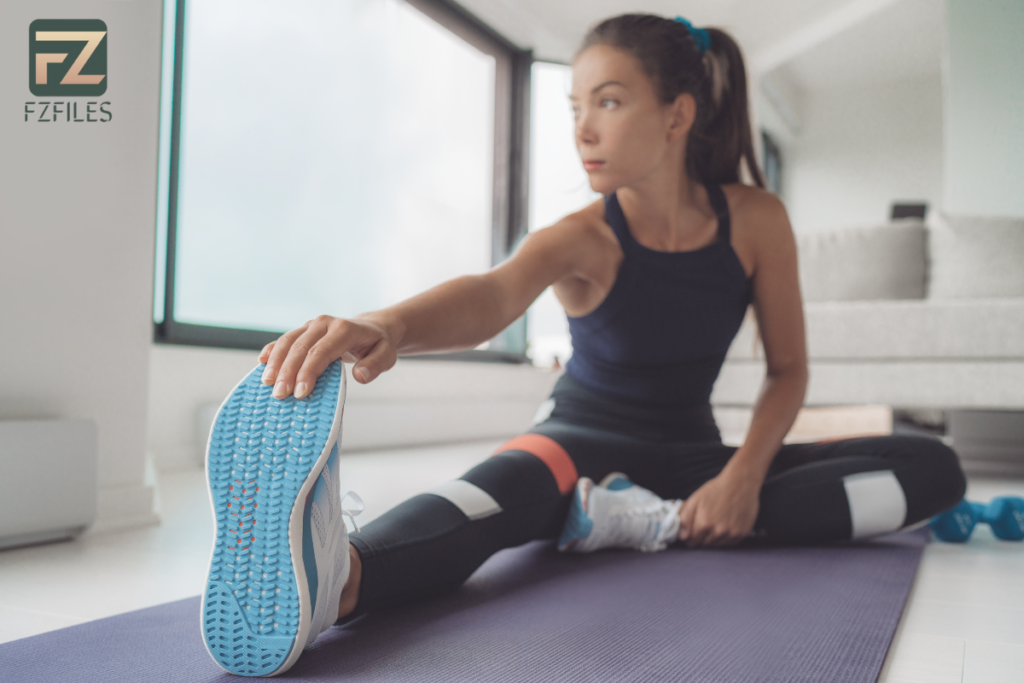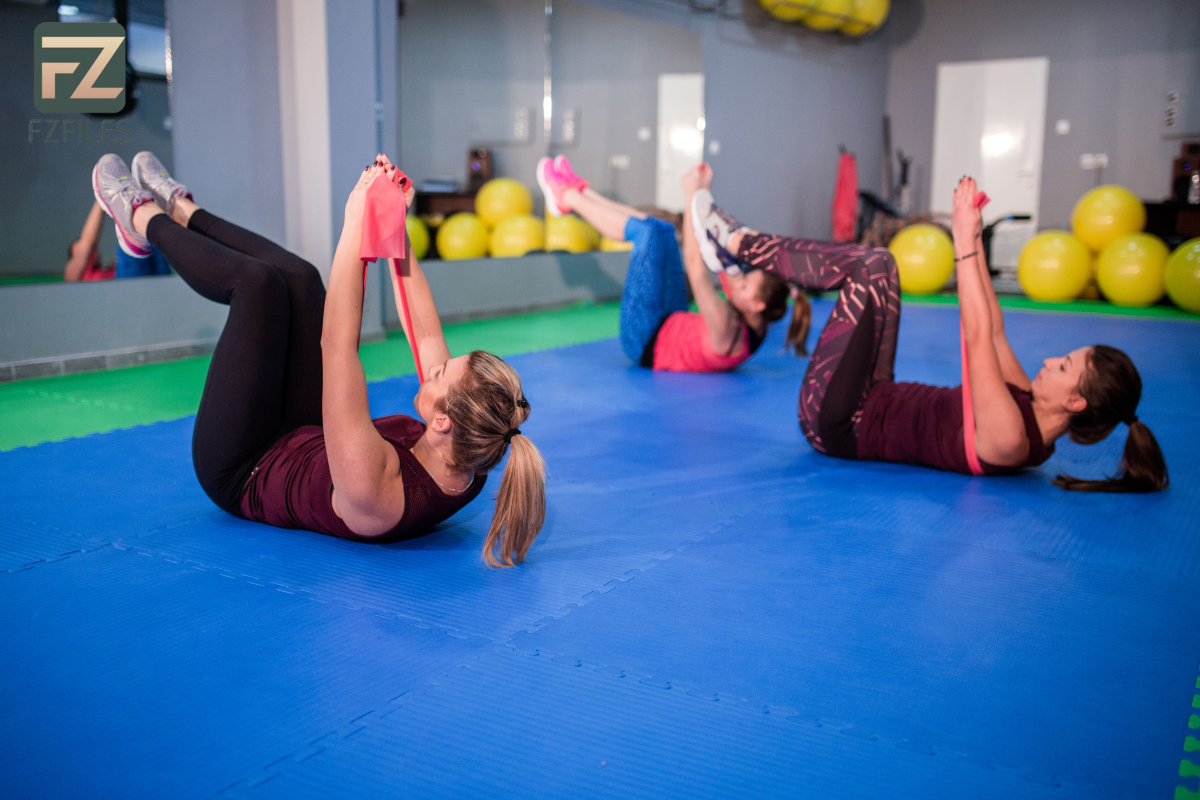Introduction to Dynamic Stretching
Dynamic stretching involves movement-based exercises designed to stretch and warm up muscles before physical activity. Unlike static stretching, which involves holding a position, dynamic stretching keeps the body moving, thereby increasing blood flow and muscle temperature. This form of stretching is particularly beneficial for athletes, as it helps to prepare the muscles for the intense physical demands of sports and training sessions.
In 2024, dynamic stretching has evolved with new techniques and routines tailored specifically for athletes. These updates aim to enhance performance, improve flexibility, and prevent injuries. By incorporating dynamic stretches into their warm-up routines, athletes can ensure their bodies are adequately prepared for peak performance.
Benefits for Athletes
Dynamic stretching offers several advantages for athletes, including:
- Enhanced Performance: Dynamic stretching helps to improve muscle elasticity and joint range of motion, which can lead to better athletic performance. When muscles are properly warmed up, they can contract more forcefully and react more quickly.
- Injury Prevention: By gradually increasing muscle temperature and blood flow, dynamic stretching reduces the risk of strains and sprains. It prepares the muscles for the physical exertion to come, making them less susceptible to injury.
- Improved Flexibility: Regular dynamic stretching can enhance overall flexibility, allowing athletes to perform movements with greater ease and efficiency.
- Increased Blood Flow: The movement involved in dynamic stretching promotes blood circulation, delivering more oxygen and nutrients to the muscles. This assists with decreasing muscle touchiness and solidness.
- Mental Preparation: Dynamic stretching can also serve as a mental warm-up, helping athletes to focus and prepare mentally for their performance.
Top Dynamic Stretching Exercises
Here are some of the most effective dynamic stretching exercises for athletes:

- Leg Swings
How to Perform:
- Stand next to a wall or a sturdy object for support.
- Swing one leg forward and backward in a controlled motion.
- Stand close to a wall or a durable item for help.
- Swing one leg forward and in reverse in a controlled movement.
Benefits: Leg swings help to loosen up the hip flexors, hamstrings, and quadriceps, improving leg mobility and flexibility.
- Walking Lunges
How to Perform:
- Step forward with one leg, bringing down your hips until the two knees are bowed at a 90-degree point.
- Push off with your back leg to bring it forward into the next lunge.
- Continue the movement, alternating legs with each step.
- Perform 10-15 lunges on each leg.
Benefits: Walking lunges stretch the hip flexors, glutes, and quadriceps while also engaging the core for stability.
- Arm Circles
How to Perform:
- Stretch your arms out to the sides at shoulder level.
- Make little circles with your arms, continuously expanding the size of the circles.
- Perform the movement for 30 seconds, then reverse the direction.
- Repeat for another 30 seconds.
Benefits: Arm circles help to warm up the shoulder joints and muscles, improving upper body mobility.
- High Knees
How to Perform:
- Stand with your feet hip-width apart.
- Lift one knee towards your chest, then rapidly change to the next leg.
- Continue the movement, alternating legs at a brisk pace.
- Perform for 30-60 seconds.
Benefits: High knees increase heart rate, warm up the lower body muscles, and improve coordination.
- Butt Kicks
How to Perform:
- Stand with your feet hip-width apart.
- Kick one heel towards your glutes, then quickly switch to the other leg.
- Continue the movement, alternating legs at a brisk pace.
- Perform for 30-60 seconds.
Benefits: Butt kicks stretch the quadriceps and hip flexors while also providing a cardiovascular warm-up.
- Torso Twists
How to Perform:
- Stand with your feet shoulder-width separated and your arms reached out before you.
- Rotate your torso to one side, then to the other, keeping your hips facing forward.
- Continue the movement for 30-60 seconds.
Benefits: Torso twists warm up the core muscles and improves spinal mobility.
- Frankensteins
How to Perform:
- Stand with your feet hip-width separated and your arms reached out before you.
- Kick one leg up towards your hands, keeping the leg straight.
- Lower the leg and repeat with the other leg.
- Perform 10-15 kicks on each leg.
Benefits: Frankensteins stretch the hamstrings and improve hip mobility.
- Hip Circles
How to Perform:
- Stand with your feet shoulder-width separated and your hands on your hips.
- Make large circles with your hips, moving in a clockwise direction.
- Perform the movement for 30 seconds, then reverse the direction.
- Repeat for another 30 seconds.
Benefits: Hip circles help to warm up the hip joints and improve overall hip mobility.
Integrating Dynamic Stretching into Training
To maximize the benefits of dynamic stretching, athletes should incorporate these exercises into their training routines. Here’s how:
Pre-Workout Routine
- Warm-Up: Begin with 5-10 minutes of light aerobic activity, such as jogging or jumping jacks, to increase heart rate and blood flow.
- Dynamic Stretching: Perform 10-15 minutes of dynamic stretching exercises, focusing on the major muscle groups that will be used during the workout.
- Sport-Specific Drills: Complete sport-specific drills or movements to further prepare the body for the upcoming activity.
Post-Workout Routine
- Cool-Down: After the workout, engage in 5-10 minutes of light aerobic activity to gradually lower your heart rate.
- Static Stretching: Incorporate static stretching exercises to help reduce muscle soreness and improve flexibility.
- Hydration and Nutrition: Rehydrate and refuel with a balanced meal or snack to aid in recovery.
Expert Tips for Optimal Performance
- Consistency is Key
Regular practice of dynamic stretching exercises is crucial for seeing improvements in flexibility and performance. Aim to include dynamic stretching in your routine at least three to four times a week.
- Focus on Form
Proper form is essential to prevent injuries and maximize the benefits of dynamic stretching. Pay attention to your body mechanics and avoid any jerky or uncontrolled movements.
- Listen to Your Body
It’s important to listen to your body and adjust the intensity of your stretches accordingly. If you feel any aggravation or uneasiness, stop the activity and counsel a medical care proficient.
- Combine with Other Stretching Techniques
Incorporate a mix of dynamic, static, and PNF (proprioceptive neuromuscular facilitation) stretching techniques into your routine for a well-rounded flexibility program.
- Stay Hydrated
Proper hydration is essential for maintaining muscle elasticity and preventing cramps. Drink plenty of water before, during, and after your workout.
- Warm-Up Thoroughly
Always warm up with light aerobic activity before starting your dynamic stretching routine to ensure your muscles are adequately prepared.
Conclusion
Dynamic stretching is a powerful tool for athletes, offering numerous benefits such as enhanced performance, injury prevention, and improved flexibility. By incorporating the latest techniques and exercises into their training routines, athletes can ensure they are well-prepared for peak performance. Regular practice, proper form, and listening to your body are key to maximizing the benefits of dynamic stretching.
By staying updated with the latest trends and techniques in dynamic stretching, athletes can maintain optimal flexibility and performance levels. The year 2024 brings exciting new developments in dynamic stretching, making it an essential component of any athlete’s training regimen. Start integrating these dynamic stretching exercises into your routine today and experience the difference in your performance and overall well-being.

[…] stretching offers numerous benefits beyond flexibility. It helps improve blood flow to muscles, enhances […]